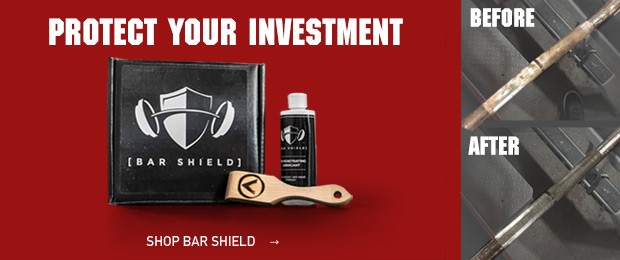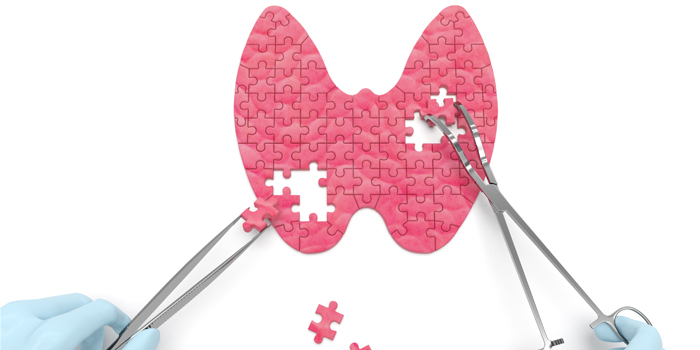
As the intaker and curator of articles here on elitefts.com, I have a pretty good handle on the content we produce. Since May of 2013, we've received six articles on thyroid health or malfunction. Regardless of the author's direction, merely reading the word “thyroid,” I pause. I recall my story — the days driving to elitefts and not even remembering the six-minute commute, the six-hour naps I took on summer weekends waking up even more exhausted—oh, and when I exploded from a 130-pound fitness chick to a 200-pound walrus.
RELATED: Your "Other T" Levels
In lieu of our content pillar this month highlighting weight loss, there's no better time than now to tuck in thyroid education as part of the curriculum as more and more of you take on the challenge of stepping on stage or making a drastic change to lose that winter bloat. After a solid three years of impeccable blood lab results, I feel that it's time to dabble in my sob story and ultimately share the phases I undertook to regain my health and life. I hope it helps you or helps you to help another trying to walk on the same misguided path.
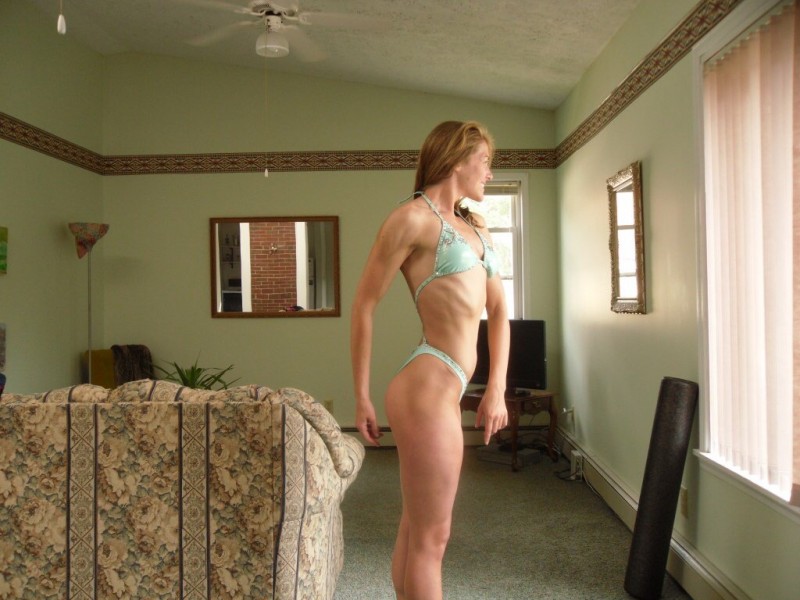
Saegertown, Pennsylvania
Sob Story
I was that high schooler who figured out my lifting split in biology class anticipating the final bell to ring so I could train and finally be surrounded by hardcore lifters wearing Zubaz. I read Muscle and Health HERS magazines from issue to issue yet skipped the recovery sections. Monica Brant's "Head-Turning Glutes" December 2002 feature was way more glamourous than reading about rest and hormones (psh recovery). Once a third-grader packing a salad for lunch as my friends swapped Roll-ups with Zingers, I matured into a graduate student eating chicken breasts from the school cafeteria to fuel a daily eight-mile run, lifting session, and campus foot travel. I had obliques — I knew I was doing things right. After graduating from rural Pennsylvania, I moved to an overpopulated suburb of Chicago, accepting a job to work with children and adults with autism (no, I wasn't a bum running a GoFundMe campaign as I pursued my figure-model aspirations). Coupled with a high-stress job, I embraced the challenge of prepping for another figure show complete with hiring a prep and posing coach. My typical day as I got deeper into prep included morning cardio spent dodging Bentleys on my bicycle, work for a half of a day, a mid-day training session, work for the second half of the day, tanning, more cardio, and posing practice.
Then, my body stopped responding to the weekly diet and training tweaks. It was this prep that we had to change to a later show in the year because I couldn't get "tight" enough. I took third in the Midwest Ironman and then crashed. Funny, I worked with a photographer after the show to fully capture my dying body.
After a two-year stay in Burr Ridge, IL, I then relocated to London, Ohio, to change occupations. Slowly each week, I was getting bigger and bigger — and not the good kind. I began to train differently because my body was a far cry away from that of a figure competitor. So, I figured, "Fuck it; I'll be a fat powerlifter." And that I did. I went from 130 pounds to 200 pounds, all while doing cardio, powerlifting, and eating oatmeal and egg whites for every meal. As my weight sky-rocketed, my cognition plummeted — I forgot how I got to work after a six-minute drive, I was in a fog at work (thank God I still have a job), and I took six-hour naps on my weekends to recover. I sought a doctor for help. Well, after being prescribed high doses of pig thyroid (Armour) that entirely halted my production, I got worse before I got better. It was at this moment that I hit rock bottom and finally woke the hell up.

Chicago, Illinois
Regaining Health
Once I knew I was only getting worse after seeking the help of a professional, I knew that to regain my health, I had to become my own best (and aggressive) advocate. You'll see in seven years the phases I transitioned into to save my life and to get my hormonal profile back to normalcy. Although my case is individual to my genetics, upbringing, personality, stress tolerance, calorie intake, and choices, I hope that you at least see the process, the time frame, the decisions made, and the ownership that ultimately took place.
Phase 1
I was in this phase for about three years. I started to feel better slowly in year one while working with the right doctor. For example, I gained some cognition back and napped less. We monitored blood work every three months in this critical state and often made little tweaks at every visit. We needed to get the T4 to T3 conversion ratio complimenting one another. Remember, I wasn't producing anything on my own because I was overmedicated with pig thyroid by my prior doctor. My training and diet were maintained during this phase.
1. Search for the Doctor Who Will Help
If you're a female, find a doctor who draws blood considering your menstrual cycle. You want to be right around or on day 20. If timing is not being considered, any labs drawn will be skewed, and if this is the case, it's your first sign to run and continue the doctor search. Consider what the labs are measuring. Progesterone, TSH, T3, T4, estradiol, testosterone, free testosterone, and estrogen are just some of the measures that paint the picture of what's happening inside. From what I've experienced, if one hormone is fucked, others follow suit, so the care has to be multifaceted. Consider if your doctor can manage your thyroid and menstrual cycle (if you're having problems in that area too). I found the one-stop doc approach beneficial as it kept the care and treatment streamlined. Consider how much time is in between labs. What changes are being made based on the labs? Assess how you're performing mentally, physically, emotionally, and sexually with each tweak. Also, make sure that you and your doctor are on the same page as to what the end goal is. It's worth mentioning, my previous doctor reminded me how sick I was every visit yet through his counsel made me worse. In contrast, my new doctor had a very positive yet realistic outlook on my situation and promised I'd be healthier than I ever was through treatment and patience. Therefore, in the right hands, I didn't label myself as a hypothyroidism patient, join a support group, or wallow. Searching for and finding the doctor who will and wants to help is by far the most critical step of this entire process.
2. Keep Your Diet in Check
How defeating is it to eat right yet look like you stuff your face with double-stuffed Oreos? I can attest that it's very defeating. Despite the dilemma, I still maintained a healthy diet. Sure, there were times that I felt like quitting by eating McDonald’s and ice cream, but I didn't. It helps that that crap was never part of my regimen to begin with, but another thing to consider is that however big you get, you'll still have to do the work to take off the weight. Why make the process harder than it has to be? I maintained a diet of vegetables, lean protein, good fats, and carbohydrates, with the bulk of my carbohydrate intake occurring closer to my training window. For a year or two in this phase, I still worked with a diet coach to keep me accountable.
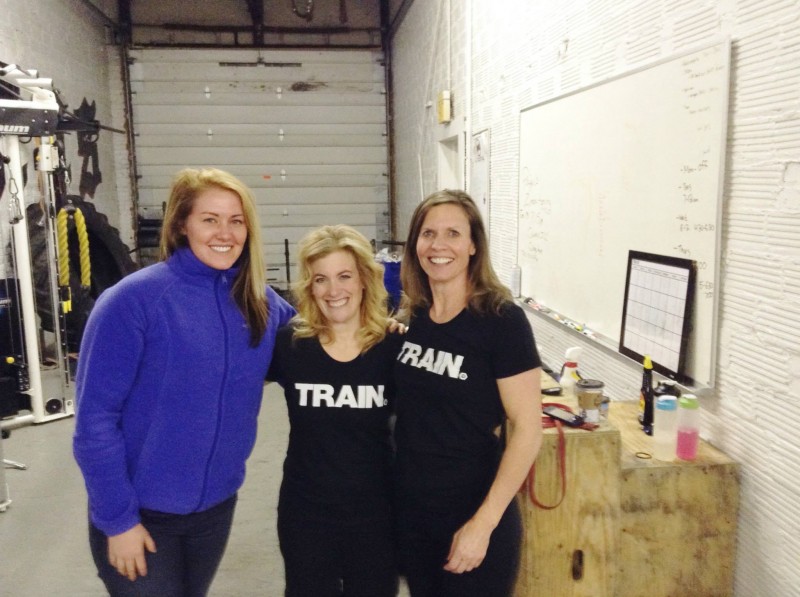
Columbus, Ohio
3. Keep Training
As I said, once I started to gain weight, I changed my bodybuilding mindset to that of a powerlifter. Pivoting in this direction shifted my mentality from how I looked to my function and strength. I trained four times a week even though I was ultimately slow, sluggish, and weak. Training in an entirely new way took my mind off what I could do or what I used to look like because it was all new, and the end goal was different. I also worked with a couple of powerlifting coaches to learn as much as I could to help with form and programming, and again, by working with a coach, I was held accountable.
4. Use This Time to Find Your True Passions
I thought that being fit, competing, and looking great were my passions. And although yes, training is a passion of mine, that lifestyle of training, competition, and looking the part wasn't serving me anymore. I overly identified with how I looked and how I could control everything, and the attention I received was playing a big role. Well, until I no longer had control of how my body was responding to my choices. So, I devoted a lot of time to the other things in my life that had taken a backseat while I was pursuing the figure-chick lifestyle. I bought a home, wrote a book, began teaching piano lessons out of my home, practiced piano more, painted more, and more! So, what will you have to fall back on as your pant size widens and you naturally age? If nothing else comes to mind, change that.
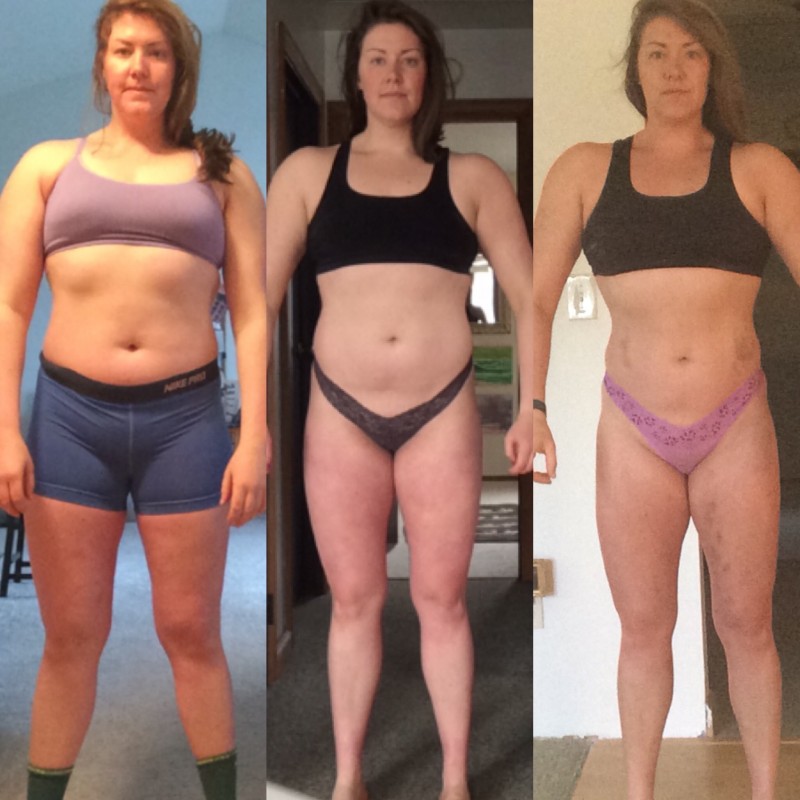
Far left is my fattest. Far right is what I was able to do with a diet coach once my hormones started to get back on track. The bruising is RPR.
Phase 2
Since phase 1, blood labs continue to get better and better. Here's where I start thinking for myself. I was in this phase for about two years, and I lost a ton of weight and began to get healthier than I had ever been.
As this article spins in another direction, I must say that those coaches with whom I worked within the three-year timeframe above helped me tremendously. Steadiness and discipline were what I needed, and that's what I got.
5. Follow Your Gut
So, I began to program for myself nutritionally and physically.
Labs continued to be drawn and assessed. Small tweaks ensued. It's during this time frame that my mind started to revolt against what I was doing nutritionally and physically (as to why I knew I had to follow my gut). For example, it dawned on me that I needed more carbs to function (like 300+ grams more) even though I was told by the previous doctor to cut carbs completely. Also, after a few minor injuries from squatting, benching, and deadlifting, my body was telling me that this type of training was not for me.
I changed my diet dramatically, with the bulk of my calories coming from carbohydrates. No longer did I fear fruits or beef. Fat melted off of me with this diet change. Heck, I ended each night with steak, biscuits, a baked potato, and ice cream!
Training wise, I went to the basics and took the barbell out of hand. I couldn't even do a bodyweight pull-up or push-up! I began to train in my garage and lost touch of the gym environment. I fell back in love again with kayaking, biking, hiking, swimming, and walking.
Phase 3
In this phase, my doctor continues to be the mainstay. The blood labs are drawn once a year, and slight changes continue to be administered (lessening med dosage). For the past year and today, I'm in this phase.
6. Continue to Sophisticate Your Newfound Health
Diet-wise, my macronutrient ratio has maintained since the last phase, but my sources for each macronutrient and how I combine my foods per meal have changed dramatically. I don't consume anything processed for 27 meals in a week's time except for one cheat meal, and my vegetable intake is higher than it's ever been in my life. I don't consume caffeine in any form (coffee or energy drinks). So, instead of waking up to a hot cup of Joe, I wake up to a cold sliced apple or orange, or juice an entire pineapple (using a Juicer). Again, it was a natural progression, and nothing was forced. I still love steak and eat it, too, but I'm also in love with homemade split lentil soup and sweet potato coconut curry soup as alternatives to animal protein sources throughout the week. I've been steady at 140 pounds, and this is where I feel the most confident and strong.
Training-wise, I balance between garage and gym workouts. I train three days a week. I go through three-week cycles where I progress a pulling, squatting, and press movement with accessories to build muscle and strength. My workouts are no longer than an hour. In week four, I take a week off, but my recreational pursuits remain (hiking, biking, walking, swimming, and rock climbing). I also walk 10K to 15K steps per day. I get these steps in while at work as I choose to walk outside for all of my breaks.
Do note, I've never been this strong, and it's been years since I got hurt. Bodyweight movements are still a mainstay, and I now do working sets of 11 for pull-ups and have been adding 30-pounds for doubles!
Beyond the tears you shed reading this sob story (just kidding), I hope that you'll be able to relate to one thing I experienced and apply something to make a change for the better in your situation. Ultimately, if your thyroid is failing you, always listen to your body, and pivot. In every phase to regain health, have a great doctor in your corner, maintain a healthy diet, and train optimally to the best of your ability. Once you feel that it's time to make changes, do it, even if you have to break away from those who helped you along the way. Please comment if there's anything I can do to help further.
More Thyroid Content
- Metabolic Damage: Disaster or Discovery
- Recovering from the Stressors of Contest Prep — Hormone Replacement Therapy
- WATCH: Menstrual Cycle Myths
- The Thyroid — Regulator of Your Metabolic Fate
- Your "Other T" Levels
- My Sh*tty-@ss Thyroid
Header image credit: sakramir © 123rf.com










